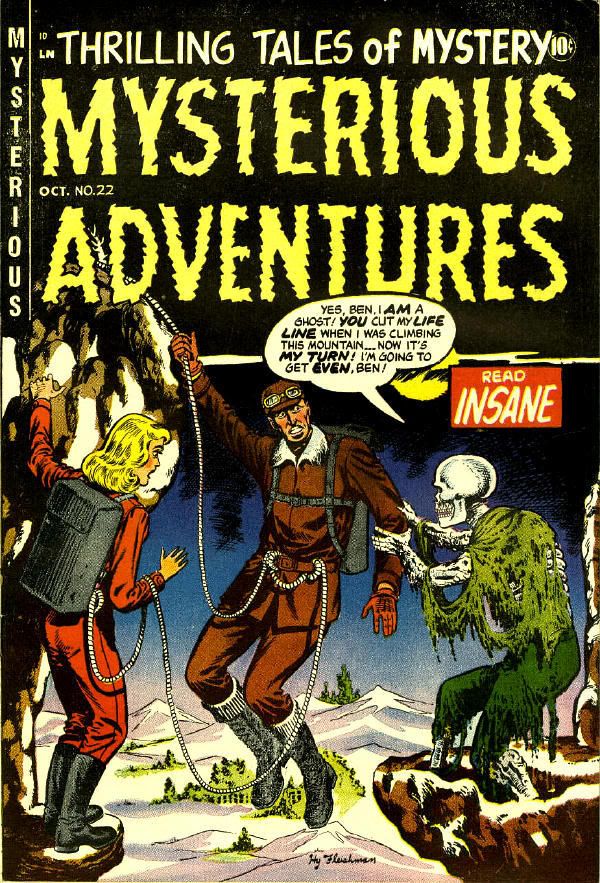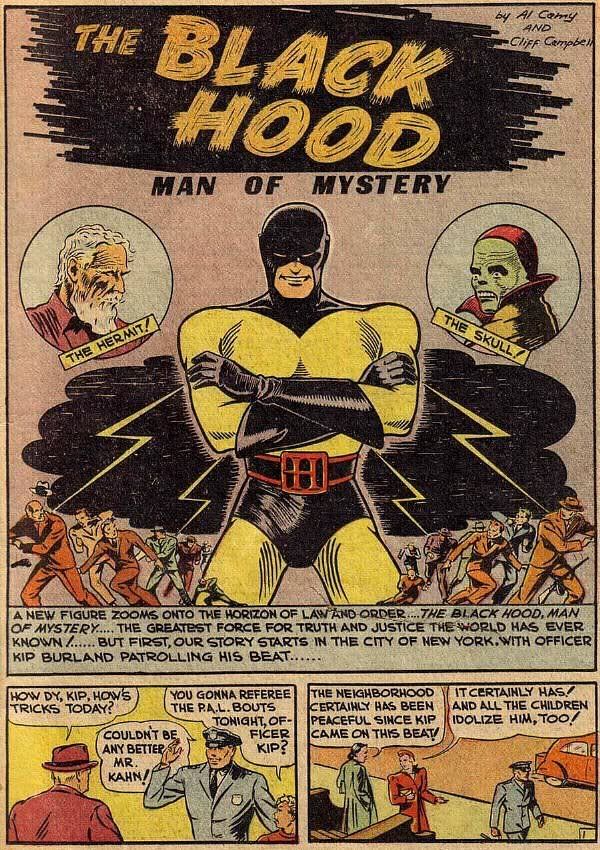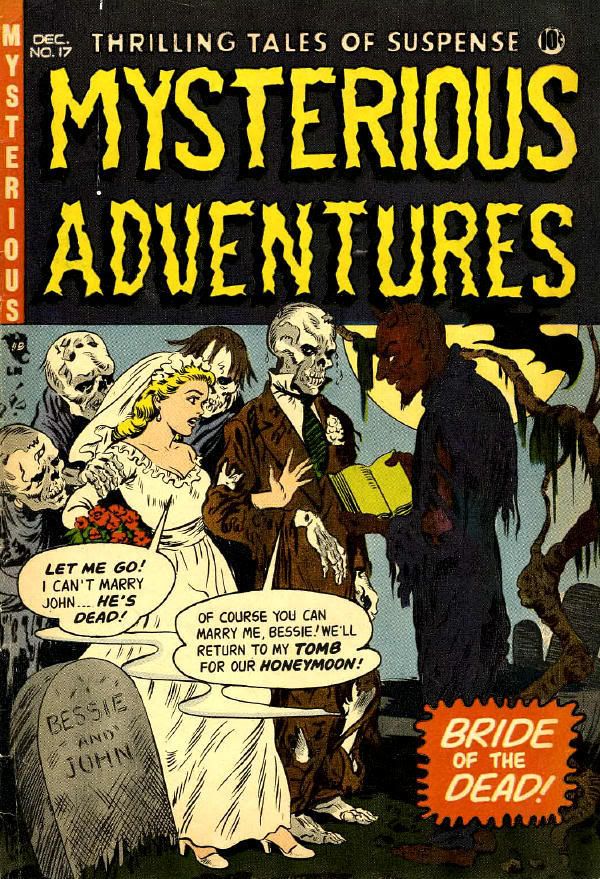
Number 167
Sex and Skeletons Part 2
Dem bones. Dem bones. Dem dry bones. Or how 'bout dem living dry bones! Yow!
Of course we all know that skeletons aren't out walking around; we all know that when the tissue finally decomposes and there's nothing to hold it together, a skeleton is nothing more than a collection of loose bones. We all know that these horror comics covers with their living skeletons are just symbolic. But still, ulp. We'd all have a jolly time if one of these horrors suddenly popped up in front of us, wouldn't we?
These covers have to do with revenge, a major theme for horror comics of the early 1950s. Here's a butcher who regrets meating a couple of bony guys, displeased by the shop's customer service.

Here's another, by artist Hy Fleishman, of a skeleton getting his revenge on a mountain climber. (The climber whose sleeve is being held seems much too passive for someone confronted with such a sight.)

Another couple of covers have to do with revenge from a murdered spouse. In those cases the publishers got themselves into a tricky spot. First of all, the covers have a sub-theme of adultery. So not only did the enemies of comics get to see gruesomely awful covers, but they could take in that the couple being visited by the skeleton were probably having sex and killed the spouse to get him out of the way. Next to those the butcher and mountain climber covers seem relatively tame.

The husband on the cover of Dark Mysteries #4 seems pretty well decomposed for a guy just buried yesterday, doesn't he?

Here's a fella who's being presented to a woman, but not for a formal introduction, we surmise. We don’t know what he's done to deserve this treatment but it's gotta be bad. We don't see her head but we get to see some boobs. Another great Russ Heath horror comics cover. His skeletons look very scary. Considering what's got this poor chump, she must really be something for his mouth to be gaping so wide.












-0651vignette.jpg)




































